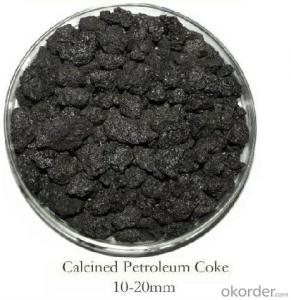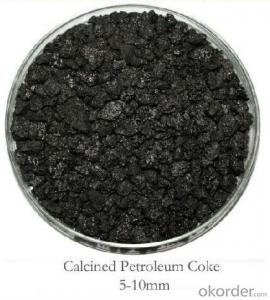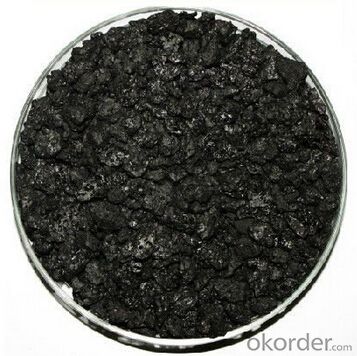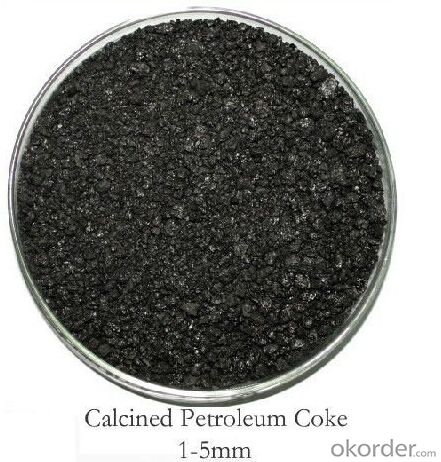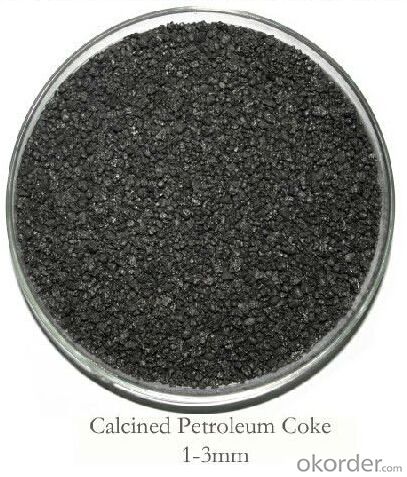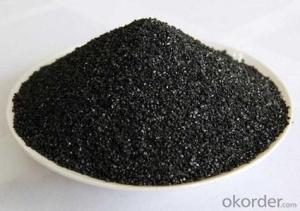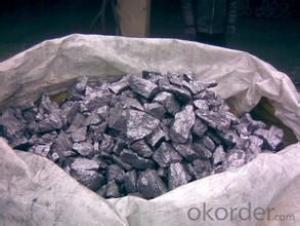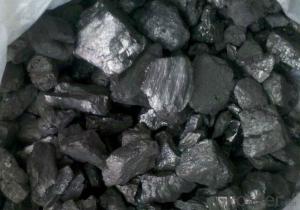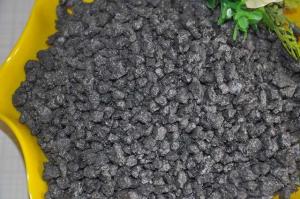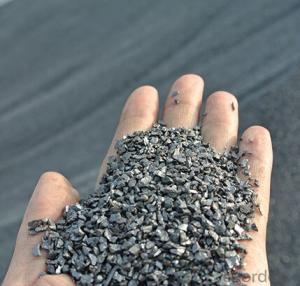Carbon Additive High FC 10-20mm for Casting Iron Foundry And Steel Plant
- Loading Port:
- Qingdao
- Payment Terms:
- TT OR LC
- Min Order Qty:
- 10 m.t
- Supply Capability:
- 500000 m.t/month
OKorder Service Pledge
OKorder Financial Service
You Might Also Like
Specification of Calcined Petroleum Coke:
Calcined Petroleum Coke comes from delayed coke which extracted from oil refinery. Although Calcined Petroleum Coke contains a little bit higher level of sulfur and nitrogen than pitch coke, the price advantage still makes it widely used during steel-making and founding as a kind of carbon additive/carburant
petroleum coke price is lower than graphite pet coke. It is widely used by most foundry plants.
Our product has follwing advantages:
The morphology, chemistry and crystallinity of recarburizer have a major impact on the overall casting cost. The combined application and cost benefits, enable foundries to manufacture castings in a highly cost effective manner.
Reduces:
- Recarburiser consumption
- Power consumption
- Inoculant consumption
- MgFeSi consumption
- Furnace refractory wear
- Scrap rate
- Tap to tap time
- Slag inclusions risk
- Chill
Increases:
- Casting microstructure
- Productivity
- Process consistency
Carbon Recovery:
Compared with calcined petroleum coke, acetylene coke and
graphite electrode scrap, our yields the highest carbon
recovery and fastest dissolution time
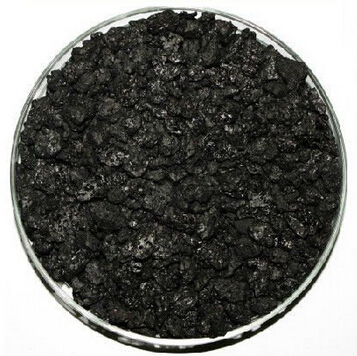

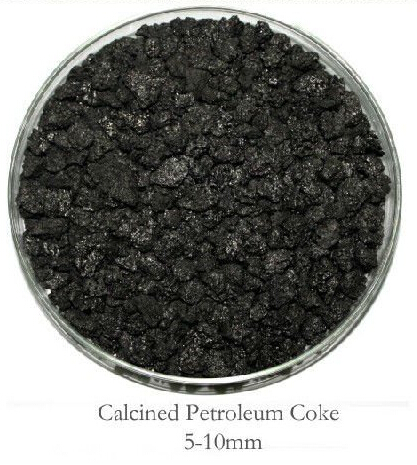
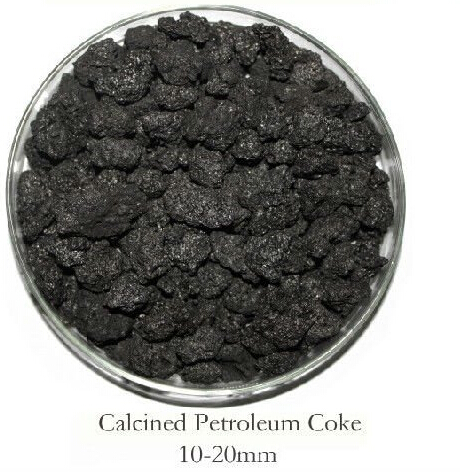
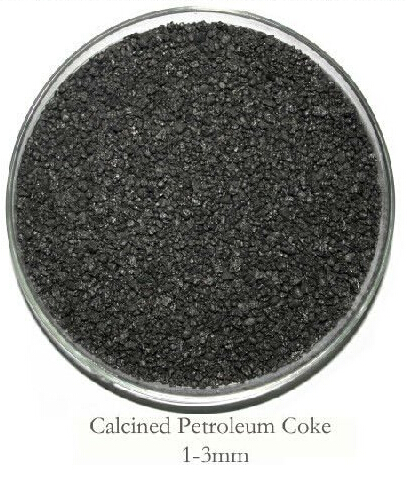
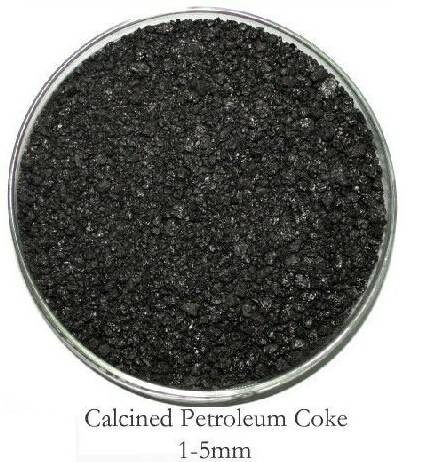
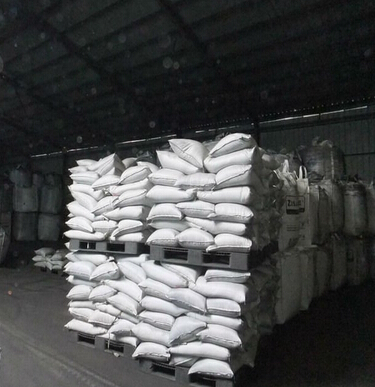
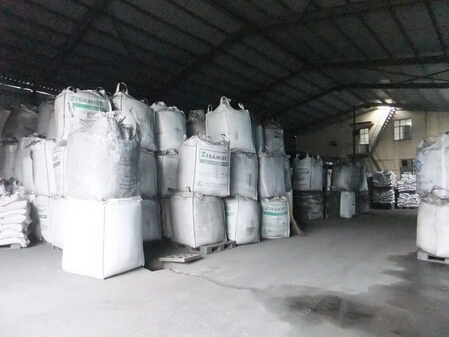
- Q: What is the role of carbonation in carbonated drinks?
- The role of carbonation in carbonated drinks is to create the fizzy sensation and enhance the overall taste and mouthfeel of the beverage. It adds a refreshing and bubbly texture, making the drink more enjoyable to consume.
- Q: How does carbon affect the growth of plants?
- Carbon is essential for plant growth as it is a key component of carbohydrates, proteins, and other organic compounds that are vital for plant structure and function. Through the process of photosynthesis, plants absorb carbon dioxide from the atmosphere and convert it into glucose, which provides energy for growth and development. Carbon also plays a crucial role in regulating plant water uptake and nutrient absorption. In summary, carbon is indispensable for the growth and overall health of plants.
- Q: How does carbon affect the pH of water bodies?
- Carbon can have a significant impact on the pH of water bodies. When carbon dioxide (CO2) from the atmosphere dissolves in water, it forms carbonic acid (H2CO3). This process is known as carbonation and occurs naturally in water bodies. Carbonic acid is a weak acid and it plays a crucial role in buffering the pH of water bodies. The presence of carbonic acid in water can lower the pH, making it more acidic. This is because carbonic acid dissociates into hydrogen ions (H+) and bicarbonate ions (HCO3-). The higher the concentration of hydrogen ions, the lower the pH of the water. Therefore, carbonic acid contributes to the acidity of water bodies. Additionally, carbonic acid can undergo further dissociation to form carbonate ions (CO32-). These carbonate ions can react with hydrogen ions, effectively reducing the concentration of hydrogen ions and increasing the pH of the water. This process is called carbonation and it acts as a buffer, helping to stabilize the pH of the water. Human activities, such as burning fossil fuels and deforestation, release excessive amounts of carbon dioxide into the atmosphere. This leads to an increase in the concentration of carbonic acid in water bodies, which in turn lowers the pH. This phenomenon is known as ocean acidification and it can have detrimental effects on marine life. Decreased pH caused by excess carbon can harm aquatic organisms, especially those with calcium carbonate shells, such as corals, mollusks, and some plankton species. The more acidic water dissolves their shells, making them more vulnerable to predation and reducing their ability to build and maintain their protective structures. In conclusion, carbon can significantly affect the pH of water bodies through the formation of carbonic acid. While carbonic acid contributes to the acidity of water, it also acts as a buffer, helping to stabilize the pH. However, excessive carbon dioxide emissions from human activities can lead to ocean acidification, impacting marine life and the overall health of water ecosystems.
- Q: How does carbon monoxide affect air quality and human health?
- Carbon monoxide, a gas produced when fossil fuels like gasoline, coal, and wood are incompletely burned, is a colorless and odorless substance. It plays a major role in air pollution and has significant impacts on both air quality and human health. Concerning air quality, carbon monoxide is classified as a criteria air pollutant, meaning it is regulated by government agencies due to its harmful effects. When released into the atmosphere, CO combines with other pollutants like nitrogen oxides and volatile organic compounds, resulting in ground-level ozone formation, a key component of smog. High levels of ground-level ozone can cause respiratory issues, particularly for individuals with pre-existing respiratory conditions such as asthma. Moreover, carbon monoxide acts as a potent greenhouse gas, contributing to global warming and climate change. It traps heat in the atmosphere, preventing its escape into space and leading to rising temperatures and altered weather patterns. In terms of human health, carbon monoxide is extremely toxic. When inhaled, it binds to hemoglobin in the blood, reducing its ability to transport oxygen to vital organs and tissues. This can result in various health problems, ranging from mild symptoms like headaches, dizziness, and fatigue to more severe conditions such as chest pain, confusion, and even death. Vulnerable populations, including children, the elderly, and those with pre-existing heart or lung conditions, are particularly susceptible to the detrimental effects of carbon monoxide. Exposure to high levels of carbon monoxide can occur in different settings, both indoors where combustion sources like gas stoves, heaters, and fireplaces are present, and outdoors in areas with heavy traffic or industrial emissions. To mitigate the impact of carbon monoxide on air quality and human health, regulatory measures such as emission standards for vehicles and industrial sources have been implemented. Additionally, raising public awareness through campaigns and utilizing carbon monoxide detectors in homes and workplaces are crucial for detecting and preventing potential exposure to this harmful gas. In conclusion, carbon monoxide significantly impacts air quality and human health. It contributes to air pollution, including the formation of ground-level ozone and greenhouse gas emissions, which have adverse effects on respiratory health, the environment, and climate change. Understanding the sources, effects, and implementing appropriate measures to reduce exposure to carbon monoxide is vital for safeguarding both air quality and human well-being.
- Q: What are the different types of carbon-based drugs?
- Carbon-based drugs can be classified into several categories based on their chemical structure and mode of action. One of the most common types is the class of drugs known as alkaloids. Alkaloids are naturally occurring compounds found in various plants and have potent pharmacological effects. Examples of carbon-based alkaloid drugs include morphine, codeine, and cocaine. Another category of carbon-based drugs is steroids. Steroids are a class of compounds characterized by a carbon skeleton consisting of four fused rings. They are widely used in medicine due to their anti-inflammatory and immunosuppressive properties. Examples of carbon-based steroid drugs include cortisone, prednisone, and estrogen. Furthermore, carbon-based drugs can also be classified as nonsteroidal anti-inflammatory drugs (NSAIDs). These drugs work by inhibiting the action of cyclooxygenase enzymes, thereby reducing pain, inflammation, and fever. Common carbon-based NSAIDs include aspirin, ibuprofen, and naproxen. Additionally, carbon-based drugs can be categorized as antibiotics. Antibiotics are compounds derived from microorganisms or synthesized artificially that inhibit the growth of bacteria or other microorganisms. Examples of carbon-based antibiotic drugs include penicillin, tetracycline, and erythromycin. Lastly, carbon-based drugs can also be synthetic compounds designed to target specific receptors or pathways in the body. These drugs are often developed through extensive research and testing to treat various diseases and conditions. Examples include cholesterol-lowering statins, antipsychotic medications, and anti-cancer drugs. In summary, the different types of carbon-based drugs include alkaloids, steroids, NSAIDs, antibiotics, and synthetic compounds. Each category encompasses drugs with diverse chemical structures and mechanisms of action, allowing for a wide range of therapeutic applications in medicine.
- Q: How does carbon dioxide affect ocean acidity?
- Carbon dioxide affects ocean acidity through a process known as ocean acidification. When carbon dioxide is released into the atmosphere through human activities such as burning fossil fuels, a significant portion of it is absorbed by the oceans. This excess carbon dioxide reacts with seawater to form carbonic acid, which then dissociates into hydrogen ions and bicarbonate ions. This increase in hydrogen ions decreases the pH of the ocean, making it more acidic. The increased acidity of the ocean has several detrimental effects on marine life. For example, it hampers the ability of marine organisms such as corals, shellfish, and plankton to build and maintain their calcium carbonate structures, such as shells and exoskeletons. This can lead to reduced growth rates, weakened structures, and increased mortality rates for these organisms. Ocean acidification also affects the survival and reproduction of many species, including fish and other marine animals. The changes in water chemistry can disrupt their physiological processes, impairing their ability to navigate, find food, and avoid predators. Additionally, the increased acidity can affect the behavior and development of some species, leading to altered ecosystems and potential declines in biodiversity. Furthermore, ocean acidification can have cascading effects on the entire marine food web. As the base of the food chain, phytoplankton and other primary producers may be negatively impacted by the changing ocean chemistry, which in turn affects the organisms that depend on them for food. This disruption can have far-reaching consequences for the entire ecosystem, including commercially important fish species and the livelihoods of coastal communities that rely on them. In summary, carbon dioxide emissions contribute to ocean acidification, which has a wide range of detrimental effects on marine life and ecosystems. Understanding and addressing this issue is crucial to protect the health and sustainability of our oceans and the countless species that depend on them.
- Q: What is carbon dioxide?
- Comprising carbon and oxygen atoms, carbon dioxide (CO2) is an odorless and colorless gas. Its formation stems from the combustion of fossil fuels, respiration, and volcanic activity. In the Earth's atmosphere, carbon dioxide serves as a crucial greenhouse gas, effectively trapping heat and impacting the planet's overall temperature. Although it occurs naturally, human actions, such as burning fossil fuels and deforestation, have significantly escalated its presence in the atmosphere, consequently leading to global warming and climate change. Additionally, carbon dioxide is a byproduct of diverse industrial processes, including cement production and power generation. Thus, reducing carbon dioxide emissions is paramount to mitigating the consequences of climate change and preserving a sustainable environment.
- Q: Is carbon a solid, liquid, or gas at room temperature?
- Carbon is a solid at room temperature.
- Q: How does carbon impact the availability of sustainable development policies?
- Carbon impacts the availability of sustainable development policies by directly contributing to climate change. The excessive emission of carbon dioxide and other greenhouse gases from human activities leads to global warming, which in turn affects natural resources, ecosystems, and communities. To mitigate the negative impacts of carbon, sustainable development policies aim to reduce carbon emissions, promote renewable energy sources, and encourage sustainable practices. By addressing carbon emissions, these policies help create a more sustainable future by preserving resources, minimizing environmental degradation, and fostering social and economic well-being.
- Q: What is carbon neutral tourism?
- Carbon neutral tourism refers to a form of tourism that aims to minimize or eliminate the carbon footprint generated by travel and related activities. It is an approach that seeks to balance the amount of carbon dioxide released into the atmosphere with an equivalent amount of carbon dioxide removed or offset. To achieve carbon neutrality, tourism operators and destinations take various measures to reduce their greenhouse gas emissions. This can include using renewable energy sources, implementing energy-efficient practices, promoting sustainable transport options, and adopting eco-friendly technologies. Additionally, carbon offsetting is often employed, which involves investing in projects that reduce greenhouse gas emissions elsewhere, such as reforestation or renewable energy initiatives. The concept of carbon neutral tourism recognizes the significant contribution of the travel and tourism industry to global carbon emissions. According to the United Nations World Tourism Organization, tourism accounts for around 8% of global greenhouse gas emissions. By embracing carbon neutrality, the industry acknowledges its responsibility to minimize its environmental impact and contribute to climate change mitigation efforts. One of the key benefits of carbon neutral tourism is the reduction of greenhouse gas emissions, which helps combat climate change. By adopting sustainable practices and offsetting remaining emissions, destinations and operators can play a crucial role in preserving natural resources, protecting biodiversity, and minimizing pollution. Moreover, carbon neutral tourism can also enhance the reputation and competitiveness of businesses and destinations, attracting environmentally conscious travelers who prioritize sustainability. However, it is important to note that achieving carbon neutrality is a complex task that requires commitment and collaboration from all stakeholders involved in the tourism industry. It involves measuring and monitoring emissions, setting reduction targets, implementing sustainable practices, and investing in carbon offset projects. Moreover, transparency and credibility are crucial in ensuring that carbon offset initiatives are verifiable and contribute to real emissions reductions. In conclusion, carbon neutral tourism is a proactive approach to minimize the environmental impact of travel and tourism activities. It involves reducing emissions and offsetting remaining ones to achieve a net-zero carbon footprint. By embracing carbon neutrality, the tourism industry can contribute to global climate change mitigation efforts while simultaneously promoting sustainable practices and attracting environmentally conscious travelers.
Send your message to us
Carbon Additive High FC 10-20mm for Casting Iron Foundry And Steel Plant
- Loading Port:
- Qingdao
- Payment Terms:
- TT OR LC
- Min Order Qty:
- 10 m.t
- Supply Capability:
- 500000 m.t/month
OKorder Service Pledge
OKorder Financial Service
Similar products
Hot products
Hot Searches
Related keywords
